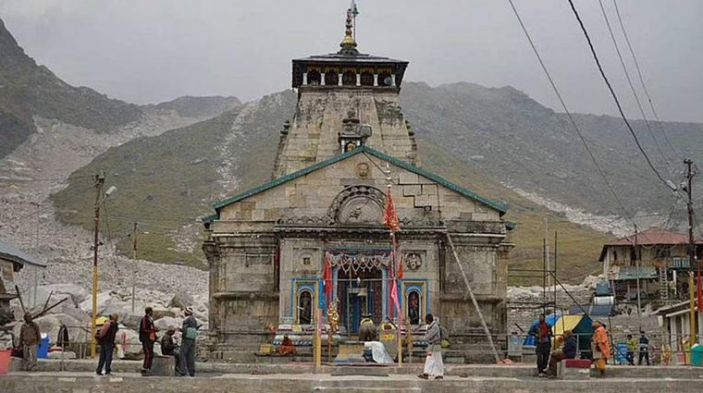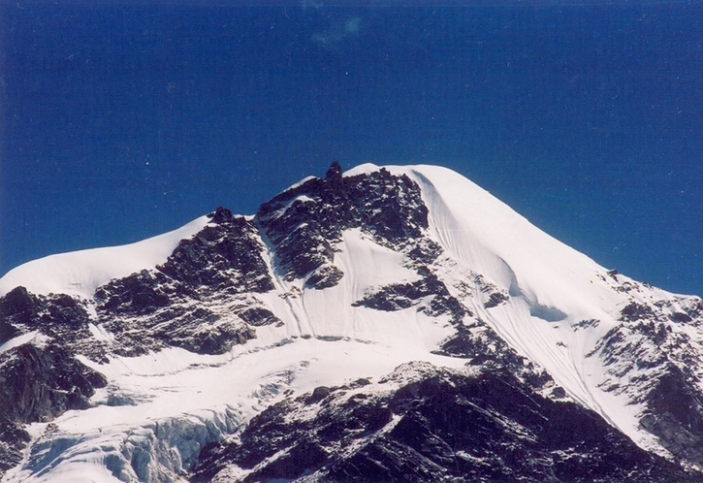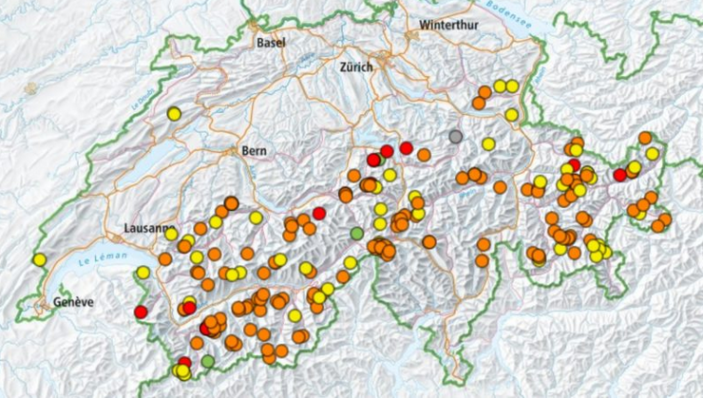
Sierra Avalanche forecasters triggered an avalanche on Tamarack Peak but escaped any consequences according to the Forest Service run center.

Avalanche Warnings in Switzerland to be modified starting this winter. The SLF is enhancing the precision by subdividing the danger levels. It will indicate whether the danger is towards the bottom end, in the middle or towards the top end of the reported level.
The SLF (Swiss Institute for Avalanche Research) says the new system will provide “users with more precise information for assessing the risk”.
The five danger levels themselves remain unchanged.

Georgia Tech engineering student Mirza Samnani volunteered over 1,000 hours to develop early warning systems for avalanches in Tajikistan.
Samnani hiked over 9,200 feet — three times — to install two weather stations in the village of Manem in Tajikistan. This project has the potential to affect more than 1 million people in hundreds of villages in the high mountainous regions of Central and South Asia including Tajikistan, Afghanistan, and Pakistan that are prone to avalanches every winter. It can also be scaled to other parts of the world where avalanches pose a high risk.

Friends of Tuckerman Ravine and White Mountain Avalanche Education Foundation, both longtime nonprofits of Mt. Washington Valley, have merged. The merger will support and promote the Mount Washington Avalanche Center, a Forest Service operation.
The new avalanche nonprofit will provide financial aid for Forest Service operations.

An expert committee was formed by the Uttarakhand government to probe a series of Kedarnath avalanches in the past two months. They advised a complete ban on construction of buildings and temporary shelters on the “highly unstable and active debris slope above (the) Kedarnath temple”.
The panel recommended a “complete ban” on construction of any form on the highly unstable and active debris slope. Including scree fans (fan-shaped rock fragments). Construction activities at such heights may “lead to changes in direction and slopes of the unconsolidated materials” between the avalanche sites and the shrine.
The report also recommended slope modification and structural changes on the slopes.
“Benching of the slope at different elevations along the steep gradients of snow drift or channels to the north of Kedarnath temple would reduce overall slope angle and retard the velocity of downward movement of snow and debris mass” added the report.
It was also suggested that concrete wedges be constructed along the mid-slope of avalanche chutes to prevent and divert the forces, for “total protection from avalanche hazard”. The design, size and number of these structures would be decided after detailed field studies.

Was the Uttarkashi avalanche triggered by an earthquake a couple days earlier? A 2.5 magnitude earthquake jolted the region on October 2. Just two days before the deadly avalanche hit the group from Nehru Institute of Mountaineering (NIM) at Draupadi ka Danda. Sixteen bodies were recovered by Thursday afternoon, fifteen were still reported missing.
The earthquake epicenter was not far from the Uttarkashi avalanche site. Experienced mountaineers as well as locals are now speculating that the earthquake may have triggered the avalanche.

A training expedition in the Himalayas was hit by a massive avalanche on a steep range in northern India, killing at least 16 and leaving about 10 others still missing.
Indian Avalanche Survivor Aakash Lalwani, one of the rescued climbers, said the wall of snow took everyone down in a matter of seconds and threw them into a deep crevasse. “We were lucky that we could somehow breathe".

The Indian Army and the Defence Geoinformatics and Research Establishment (DGRE) have jointly installed the Avalanche Monitoring Radar, first of its kind in India, in north Sikkim.
Defence spokesman Lt. Col Mahendra Rawat said that the radar was inaugurated at an altitude of 15,000 feet in Sikkim.
This radar has the capability to detect avalanches within three seconds of their triggering and will assist in saving valuable life of troops and civilians , he said.

Can we use Artificial Intelligence for Avalanche Forecasting?
Even the best forecasters only reach about 75% accuracy in their avalanche predictions. After all, they are only human. One of the greatest challenges is in the fact that avalanche danger cannot be precisely measured or communicated. It is, therefore, a matter of expert assessment and opinion by humans.
Last season the Swiss Institute for Snow and Avalanche Research successfully tested a first-of-its-kind, artificial intelligence computer program to assist in its avalanche forecasts. The SLF is a world leader in the field of avalanche forecasting and pushes the boundaries of avalanche forecasting methods.